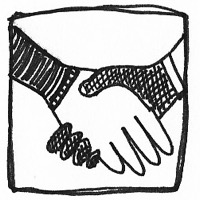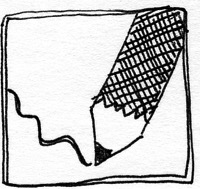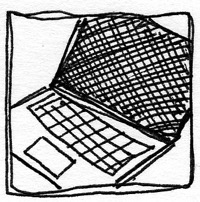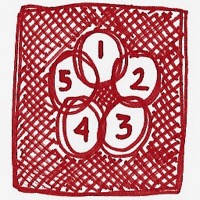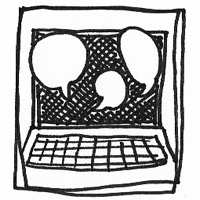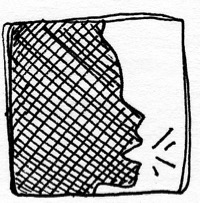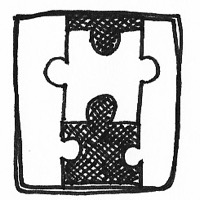Our curriculum for the eTC ENGL 219 course deploys foundational rhetoric within 21st-century modes, keeping in line with the expanding field of technical communication. Saul Carliner (2010) traced the evolution of the technical writer from one who once composed documents using a typewriter to one who now designs documents with desktop publishing software and so much more, including managing rich-media communications; social-media interaction; single-sourcing of content; management of outputs within content management systems; and the hypertextualization of end-user engagement through online help. This incredible expansion of roles within the realm of "technical communication" indicates that foundational training (and foundational terminologies) must keep pace with this atmosphere of constant technological innovation.
When developing our course, we wanted to build a curriculum that not only reflected these changes but also helped students develop literacy skills that would benefit them as technology continues to improve and change the way we compose. There is a need for technical communicators to learn to develop multimodal documents, as the very way society communicates continues to evolve at such a swift pace, impacting every discipline and field, including technical communication. Gunther Kress (2003) indicated a shift in the level of semiotic production from older technologies of print to digital and electronic and in representation from the dominance of the mode of text to image. As he argued, "the effects are felt everywhere, in theory no less than the practicalities of day-to-day living" (p. 6). The communicative practices of society are changing still, with academia, Kress posited, being slow to catch up. As such, our curriculum seeks to help students acquire and foster literacy skills, particularly multimodal skills, that are imperative for living and communicating in our digital world.
Because technology continually evolves, academia may not be able to "catch up" by teaching students to use certain software programs. Instead, the curriculum for eTC ENGL 219 focuses on the rhetorical considerations behind multimodal composition, with students understanding audience, purpose, and medium for communicating—their choice of audience and purpose impacts their choice of medium. The integration of such rhetorical concepts recognizes the field's shift to Carolyn Miller's (1979) "humanistic" approach to user-centered documents, where the reader impacts the writer's decisions. Yevgen Borodkin (2016) suggested that rhetorical aspects of technical communication have slowly entered the curriculum in the past 30 years and are now a mainstay in technical communication courses. Similarly, Kelli Cargile Cook (2002) noted that students in these courses need to be learning how context and purpose influence a particular audience. Pairing rhetoric with visual design, Eva Brumberger and Kathryn Northcut (2013) encouraged attention to visual literacy, or the "looking, seeing, thinking, and producing" that can and should accompany a rhetorical pedagogy (p. 3). Brumberger (2007) argued specifically for the rhetoricity of visual design, or the visual thinking behind document production where students are prompted to reflect on the rhetorical choices made when composing a visual document.
Although visual rhetoric may not be new to the field, scholarship regarding employing a multimodal pedagogy in technical communication has started to enter the conversation in the last decade, with scholars discussing how to assess such projects (Ball, 2012), and others arguing that reflections of rhetorical choices lead students to create more rhetorically effective multimodal projects (Lauer, 2013). Thus, it comes as no surprise that visual design and rhetoric would be linked to influence the goals and outcomes of a multimodal pedagogy important for 21st-century technical communicators' success in the workplace.
While our curriculum draws on concepts just beginning to enter the technical communication conversation, we believe that the foundations of rhetoric—namely the rhetorical canons—have a role in digital document creation. In fact, our courses use the canons as course outcomes, and students learn how these concepts impact their design decisions. Although the canons might not seem to align with a multimodal pedagogy, Borodkin (2016) argued that "each of the rhetorical canons (invention, arrangement, style, and delivery) and appeals (logos, ethos, and pathos) are found in every type of technical communication in various proportions, depending on the audience, purpose, and context of the communication act" (p. 89). Andrew Bourelle et al. (2015) argued that the canons can provide a framework for a multimodal curriculum, and the authors reconceptualize the ancient tools for a more modern classroom. The class we are describing, as noted elsewhere in this webtext, extends the work of Bourelle et al. To that end, the canons are linked to multimodality as follows:
Invention
Students brainstorm how the audience will interact with the project they are creating. They participate in peer brainstorming and peer review sessions, coming back to invention if necessary upon receiving feedback.Arrangement
Students consider the design of a document, including use of text and visual elements, as well as color and layout.Style
Students examine how various modes impacted the audience, including voice, sound, and images, considering how each mode works together to form a thesis or argument.Delivery
Students consider what medium would best represent their communication, whether in the form or video, website, podcast, etc.Memory
Students consider how their rhetorical choices impact their design choices as the semester progresses, writing metacognitive reflections regarding these choices. During the semester, students create three major projects and an eportfolio that can be used for professional purposes, attending to the canons as outcomes for each project. The three projects in the course include an instructional set, an analytical report, and a recommendation report, and the final portfolio showcases revised projects ready for public circulation and in-depth reflections of course outcomes.
We believe, as this webtext's opening overview stated, that our unique deployment of Memory-related activities is specifically related to our multimodal curriculum because of our commitment to asking students to assemble meaning through reflection (as an enactment of Memory), both as community members (through the discussion board and in peer review) and as individuals (in their own major assignments).
